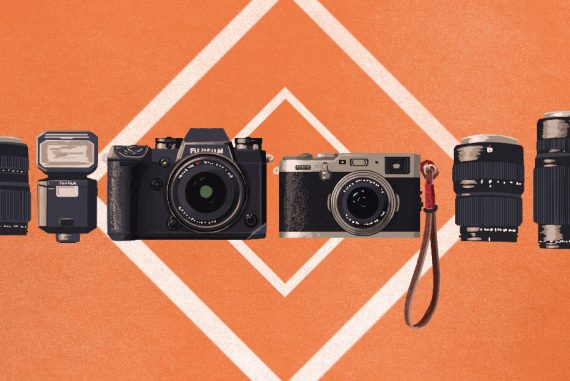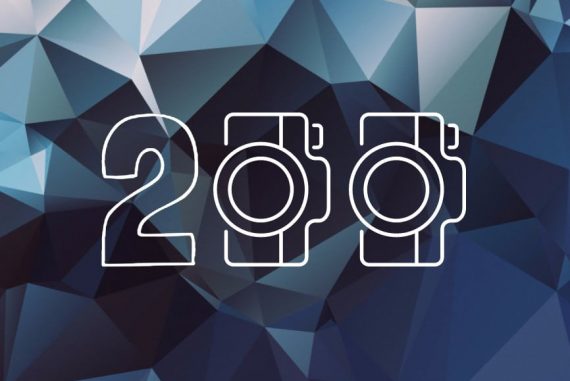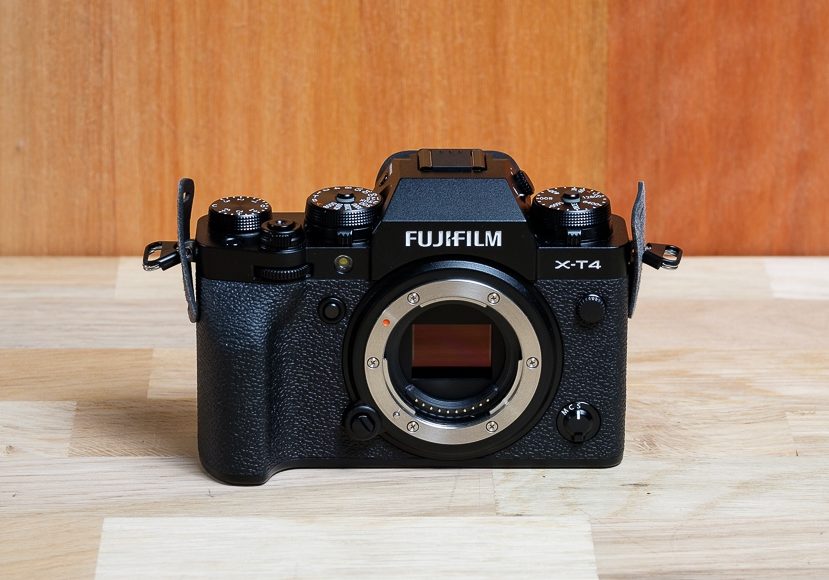
Fujifilm X-T4 Camera Review
The new addition to the Fuji X-Series lineup is pushing boundaries, but is the Fujifilm X-T4 the perfect camera? Read our in-depth, honest review to find out!
Fujifilm have just released their brand new flagship camera – the Fujifilm X-T4 – and I’m here to give you the run-down on what it has to offer.
Let me just start by explaining that I haven’t always been a Fuji shooter.
When I first started out, I chose Canon as my camera brand. But lugging around big heavy DSLRs caused me to develop some back issues – and my love of photography evaporated.
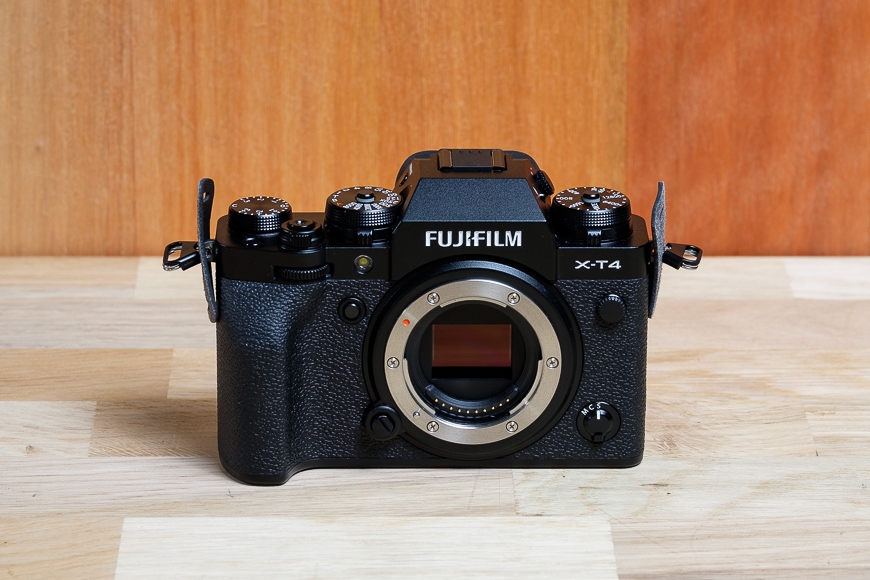
Shoot flawless photos with state-of-the-art image stabilization, superb AF and impressive burst mode.
Thankfully, a friend introduced me to the original Fujifilm X100 and I was instantly back in the game.
Here was a camera system that weighed next to nothing and was a joy to shoot with. I was a convert to shooting Fuji cameras.
I picked up a Fujifilm X-T1 with a couple of lenses and I’ve been loyal to the X-T series of cameras ever since (I upgraded to the X-T2 and then the X-T3).
And now for the latest in the series. I have to say that it’s an impressive piece of kit and well worth a look.
If you’re searching for the best mirrorless camera available, then you can’t possibly go past the X-T4.
There are some significant changes in this new entry as well as some familiar and welcome features inherited from previous versions.
Let’s take a look at why I reckon the X-T4 is a near-perfect camera and well worth the asking price.
Summary: Fujifilm X-T4 Review
Building upon the features of its predecessors, the X-T4 impresses across the board. Image and video quality both shine, AF works a treat, and the continuous shooting mode positively purrs. Being Fuji, the highly customisable features are packed into a stylish, lightweight body. Worth the spend? In a word, definitely!
Fujifilm X-T4 Specs
- Familiar manual controls
- Slick retro design
- Range of available lenses
- AF performance
- Image and video quality
- Film simulations
- Leather ears right out of the box
- I don’t own one… yet!
- X-Trans CMOS 4 Sensor & X-Processor 4
- 26.1MP
- 5-axis IBIS
- Continuous @ approx. 15fps Mechanical Shutter
- Continuous @ approx. 30fps Electronic Shutter
- Intelligent Hybrid AF
- 0.5″ 3.69 million dot OLED Color Viewfinder
- 3.” 1.62 million dot touch screen LCD monitor
- 4K(4096 x 2160)] 59.94p/50p/29.97p/25p/24p/23.98p
- 18 Film Simulations
- Modes Classic Neg, ETERNA BLEACH BYPASS
- 134.6mm H (XX”) x 92.8mm W (XX”) x 63.8mm D (XX”)
- (W) 134.6mm x (H) 92.8mm x (D) 63.8mm (minimum depth 37.9mm)
- 607g (1.33 lbs)
Build & Appearance

The Fujifilm X-T4 looks great even with an older XF 56mm f/1.2 lens attached.
While at a casual glance the Fujifilm X-T4 looks exactly the same as the X-T3, there are some subtle and very important differences between the two.
Upon closer inspection, the X-T4 is just a tad bigger, especially with the grip – the camera is 2mm wider and 5mm deeper than the previous model.
But that small increase in the grip depth adds a considerable amount of comfort and overall control to your shooting.
It has also put on a little weight – just on 68g – and while not a huge difference, you certainly notice it when holding both together.
Regardless, the X-T4 is only 607g, and when compared to many DSLRs and even some mirrorless cameras, it’s still a comfortable weight to carry.
It has an all-metal body with the top and base plates exposed while the rest is wrapped in a textured material.
Keep in mind that this is a weather-sealed camera and when paired with any of the amazing WR lenses from Fuji, you’ve got a system to battle the elements. (See: best lenses for Fujifilm X-T4)
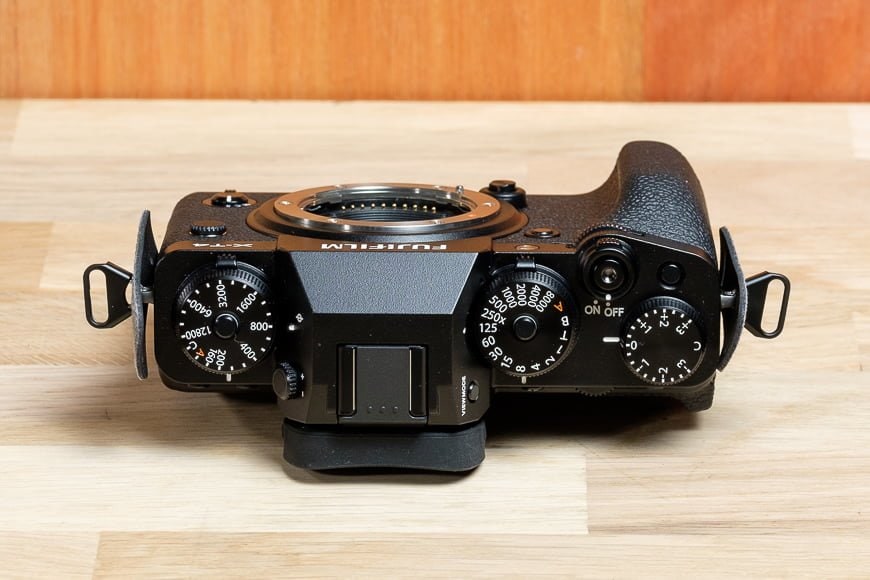
Fuji cameras, like the Fujifilm X-T4, give full manual control to all the core functions. Old school!
The top plate of the Fuji X-T4 is where all the action happens. Here you’ll find the ISO dial, Shutter Speed dial, Exposure Compensation, On/Off switch that also houses the shutter button and a customisable Function button.
The ‘mirror-box’ is also a little broader and features a hot shoe, viewfinder diopter dial and View mode button. At the rear is a rubber eye-cup that is firm with softer edging (can’t stand harder cups that bang into my glasses).
The front of the camera has the standard Focus Mode switch, sync-terminal (does anyone still use this system?), and a customisable command dial that not only spins with a nice click but is also a pressable function button.
All of these elements combine to deliver what is undoubtedly a retro-inspired design that turns heads.
Everything feels solid and robust and obviously made with premium machining and products.
All of this makes the X-T4 a camera that will likely last a lifetime – not many consumer products these days can claim that.
Another key design element of this, and most Fuji cameras, is that regardless of the Fuji lens you attach, the camera looks well balanced.
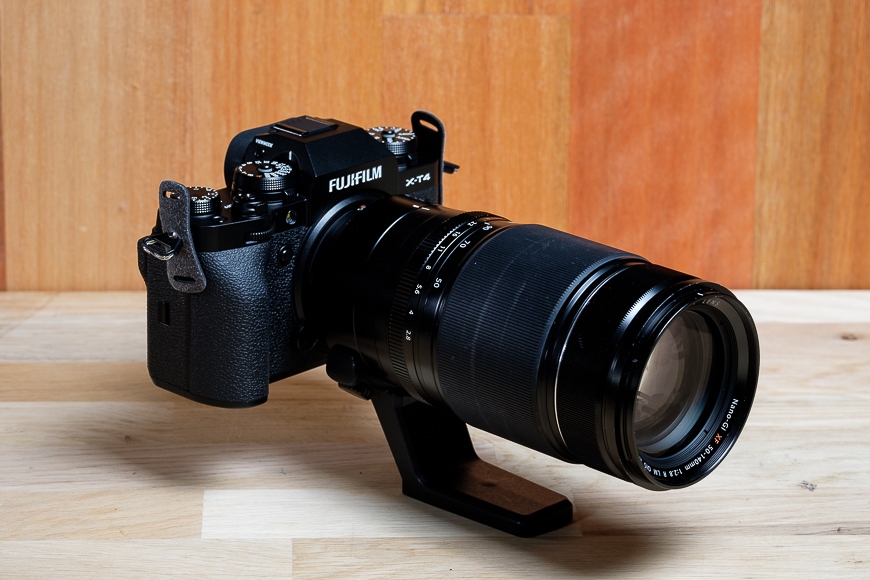
The X-T4 and the XF 50-140mm f/2.8 make a formidable pair.
Drop the giant XF 50-140mm f/2.8 on and it looks right at home and ready to compete with any sports photography camera. Equally, drop the little Fujifilm XF 16mm f/2.8 on and it looks like a stealthy, retro-inspired street photography camera.
On one side of the X-T4, there’s a hinged door housing dual card slots. These are in line now rather than parallel like on the X-T3, making it easier to access and remove one without releasing the other.
The other side of the body is home to two flaps: one hosts the micro HDMI and USB-C ports and the other is home to a 3.5mm mic jack and a 2.5mm remote port.
These external doors, as well as the battery door on the base, sit incredibly flush and tight against the body.
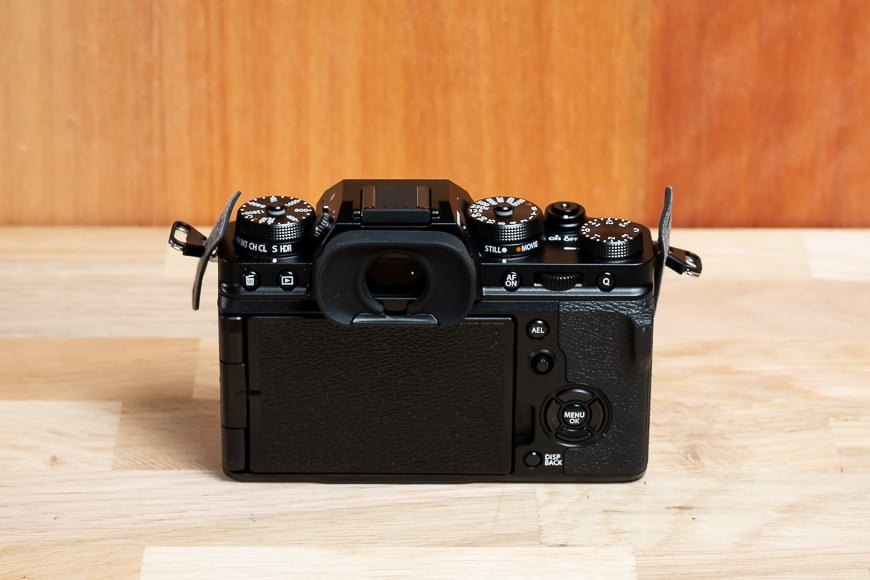
The LCD screen on the X-T4 folds neatly away with no protrusion.
The rear of the body is where a big change has occurred.
In the Fuji X-T3, the screen had the ability to tilt up, down and out for portrait mode shooting. With the Fujifilm X-T4, the screen is now on a pivot that can flip out 180 degrees and rotate 180 degrees.
What’s more, you can rotate and flip the screen so that it faces inwards against the back of the camera. This sits flush and the back of the screen housing is coated in the same textured material as the rest of the body.
Above and alongside the screen there are minimal buttons, a command dial, mini-toggle and direction pad – interesting that Fuji still keeps the d-pad on this camera when they have removed it on other models.
Overall, the Fujifilm X-T4 looks amazing. Fuji have gone the extra mile to minimise gaps between components and sharpen the design lines.
I often say that many cameras won’t win any beauty contests – the Fujifilm X-T4 is without a doubt the Belle of the Ball!
Ergonomics & Handling

New to the X-T series, the X-T4 features a full flippy, rotating touch screen.
The design of the Fuji system, which includes a full set of core control dials, contributed to me jumping ship to Fuji and learning to love photography again.
There is something very intuitive about the way you can manually control every element of your photography experience – rather than just letting the camera do all the work.
The other aspect that drew me to Fuji was that I was sick and (literally) tired of lugging heavy DSLR cameras and glass around. Many were oversized and unbalanced.
The Fujifilm X-Series cameras, like the X-T4, are a comfortable weight and ideal to carry for a day of shooting. I carried my X-T1 and X-T2 on separate trips around Japan. (Remember the days when you could travel?)
The X-T4 is well-balanced when paired with any of the Fuji lenses, and the grip is deep and supportive, even for larger hands.
There’s plenty of room on the back of the body for thumb real-estate and increased grip. This is the sort of camera where you can walk around confidently with no camera strap at all – personally I just use a wrist strap with my X-T cameras.
In terms of practicalities, the Fujifilm X-T4 does not include a battery charger in the box. It does include a USB to USB-C cable and the idea is to charge the battery directly through the camera.
While an unorthodox approach, I’m sure that more and more consumer electronics will move in this direction. A plus is that you can charge your camera on the go with a power bank.
A further inclusion in the kit is a USB-C to 3.5mm headphone jack short-cable – a perfect addition for those serious about video and audio, although it would have been nice to include a headphone jack on the camera.
Another change with the X-T4 is that the ISO dial and the Shutter Speed dial are both split into two – like the layers on one of the sponge cakes my Nan used to make for Sunday tea.
The ISO dial base allows for the selection of continuous shoot modes, bracketing and more. The Shutter Speed base allows for you to select between Still and Movie modes – remembering that the X-T4 is also a video powerhouse.

The X-T4 continues the trend with manual control dials. Note the new dial for switching between Still and Movie modes.
For those new to the Fujifilm system, Fuji’s cameras are well known for their customisation abilities.
Not only are there unmarked buttons on the camera ready to be customised, but many of the dials and buttons can be re-allocated to different functions.
One thing that bothers me is Fuji’s decision to ship the camera with the strap mount rings already attached to the lugs. While many will celebrate Fuji in taking over what is a fiddly job, it does remove some of the flexibility in how you dress your X-T4.
The lugs hold the standard Fuji triangle split rings complete with leather tabs already installed. These tabs prevent your camera from being scratched.
It’s great that Fuji have packed a nice wide strap in the box – however, it gets worse.
I always choose to install my own wrist strap. But Fuji have fixed a plastic lock onto the split ring and, as a result, I cannot remove it without fear of breaking the lock.
I am reviewing a loan camera after all, and I can’t just snap them off.
If this was my own camera I would break them off and install my own strap with a circular split ring.
By all means, Fuji could include these parts in the box but they should not make assumptions that all photographers want this per-installed and fixed in place.
As a result, all of my shots of the Fujifilm X-T4 in this review look like the camera has leather ears – not my fault Fuji!
But aside from that, all the dials and buttons operate as you would hope with appropriate amounts of resistance and nice clicking feelings to confirm your selection. Also, the ISO and Shutter Speed dials can be locked into place to prevent accidental changes.
Finally, we come to the brand new flip-out screen. This is a welcome change for many of my Fuji friends (although the screen on the X-T3 never really bothered me as I’m not the self-obsessed, selfie-taking type 😜).
The flip-out screen that rotates 180 degrees really opens up the flexibility of the X-T4 for video, vlogging and, yes, even selfies.
I also like how the screen can flip over so that it faces into the camera body – it makes the shooting experience more intimate.
Focus Performance

Fujifilm X-T4 + Fujifilm XF 16-55mm f/2.8 | 16mm 1/8ss f/22 ISO80
I’ve found the focus performance of all the X-T models to be fantastic – the Fujifilm X-T3 is a showstopper when it comes to focusing speed.
Believe it or not, the X-T4 improves on that tried and tested formula to deliver lightning-fast autofocus – especially when paired with the faster primes and zooms.
The focus system employs an intelligent hybrid AF with both TTL Contrast AF and TTL Phase Detection AF.
The tracking modes on the X-T4 are sticky and include face and eye detection. This was a little sketchy in the early days of Fuji including it but now is super effective.
The Fujifilm X-T4 uses a new focal plane shutter that is activated by a high-speed coreless motor. As a result, it can push fps to a commendable 15fps continuous shooting burst rate.
What’s more, the shutter is super quiet – you should hear it purr when you fire off a long burst at high speed!
When shooting with the electronic shutter, you can shoot up to an incredible 30fps. Shooting in JPEG leaves you wondering which will get tired first – the battery, the memory card or you.
Inevitably, as with all good things, it comes to an end and the buffer takes a little while to store away all that data.
Low Light Performance

Fujifilm X-T4 + Fujifilm XF 16-55mm f/2.8 | 1/125ss f/8 ISO6400
I really wanted to push the Fujifilm X-T4 to determine just how good its low light performance stacks up.
The numbers are impressive, beginning with the use of the image sensor shift mechanism that works down to -6.0 EV. This includes the 5-axis with a maximum of 6 stops of compensation that’s new to the X-T range.
This was a big win from Fuji as many photographers have been calling for IBIS in the flagship bodies.
Standard ISO ranges from 160 to 12,800 with 1/3 steps and an extended range of 80 to 51,200.
In practical terms, the X-T4 performs incredibly well in low light with the AF system being just as attentive and accurate as seen in good-light.
Image Quality

Fujifilm X-T4 + Fujifilm XF 16mm f/2.8 | 1/125ss f/6.4 ISO400
Images straight out of any Fuji camera are remarkable. They render contrast and make the most of the amazing science behind Fuji’s colour recreation.
The ability to shoot in JPEG only brings a lot of freedom to your workflow – you can apply film simulations in-camera along with changes to settings such as contrast and grain.
It’s well known that Fuji JPEGs are stunning and leave many wondering why they bother to shoot in RAW at all.
Alternatively, you can convert a RAW file in-camera to a JPEG with these same settings.
Of course, you can shoot in Uncompressed RAW or Lossless Compressed RAW and use all the gorgeous data from the file in post-production.
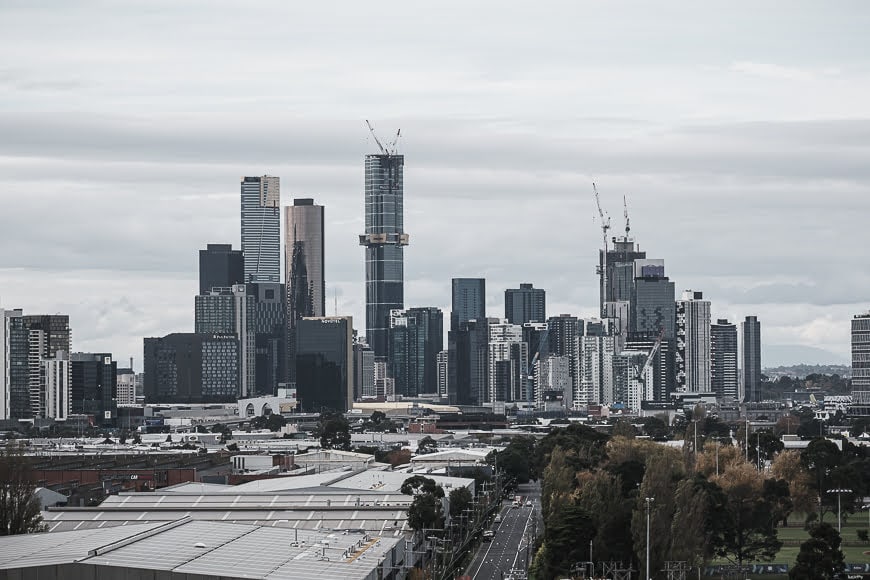
Eterna Bleach Bypass film simulation | Fujifilm X-T4 + Fujifilm XF 50-140mm f/2.8 | 87mm 1/250ss f/8 ISO200
Speaking of Fuji’s popular film simulations, the Fujifilm X-T4 has a total of 18 simulations for you to apply various moods to your images.
A personal favourite is the Classic Chrome simulation that’s in every Fuji X-Series camera.
New to this camera is the Classic Negative – first introduced in the Fuji X-Pro3 – and the brand new Eterna Bleach Bypass. Bleach delivers an even softer and more muted version of the video-centric Eterna film simulation.
While this is intended as a simulation for video, it can be applied to still images too. I’ve included an example of both the Bleach (above) and Classic (below) for you to check out.

Classic Negative film simulation | Fujifilm X-T4 + Fujifilm XF 50-140mm f/2.8 | 87mm 1/250ss f/8 ISO200
Either way, you’re going to be thrilled with the exceptional image quality produced by the Fujifilm X-T4.
Thanks to its 26.1MP sensor created from the latest and greatest technology Fuji has to offer, you’re capturing a lot of image data with the X-T4.
It’s important to remember that image quality isn’t solely the responsibility of the camera – the lens plays a key role here too. There’s no point having an amazing camera if your lens is crap, soft and distorts all over the place.
Fortunately, Fujifilm has an incredible line-up of quality X-Series lenses that deliver optical sharpness, fast autofocus and brilliant image quality.

Fujifilm X-T4 + Fujifilm XF 50-140mm f/2.8 | 119mm 1/250ss f/5.6 ISO200
Stay tuned for our article on the best lenses for the Fujifilm X-T4 for a taste of the quality of glass available for this camera.
Overall Performance
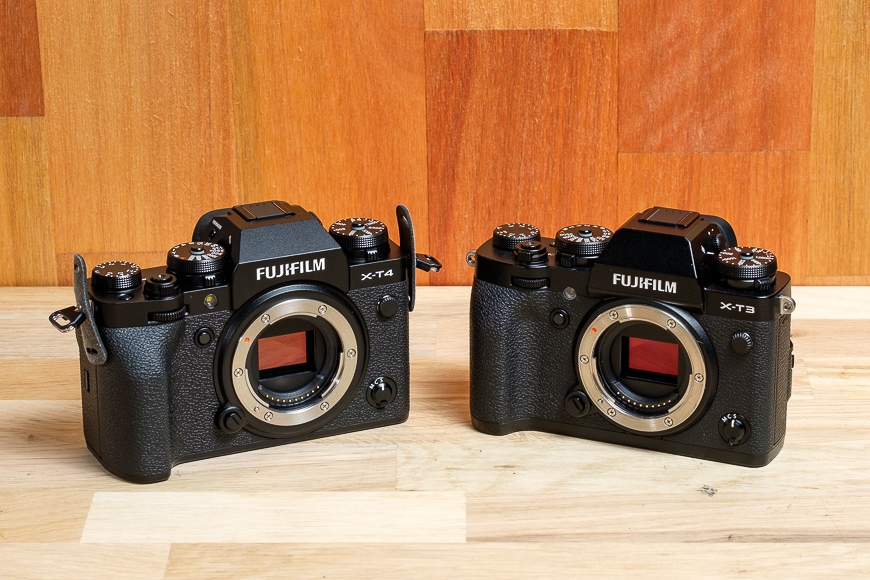
The Fujifilm X-T4 and X-T3 cameras first appear to be much the same.
From the moment you lift the Fujifilm X-T4 out of the box you know that this is a premium product made by one of the most capable camera brands the world has to offer.
Your next moment of joy is when you switch it on and see it come to life in a fraction of a second – ready and waiting to impress you with its considerable arsenal of features.
If you haven’t caught on yet, the X-T4 performs at a pro-level no matter what you throw at it.
Test its capacity to function in low light and at high ISOs and it will show you what it’s made of.
Test its autofocus, tracking and continuous mode and you’ll find yourself grinning like an idiot as it purrs silently in your hand. Like me, you’ll find yourself testing continuous high bursts over and over.
Test its video capabilities and it will have you dreaming up video projects in your sleep.
There is no doubt that the Fujifilm X-T4 is the best camera that Fuji has released for its X Series.
It really does beg the question of why you would need Full Frame when an APS-C camera can achieve so much – I can hear the complaints from the Full Frame Fan Club already.
But in all seriousness, this is a contender if not the front-runner for best camera of 2024!
Other Useful Features
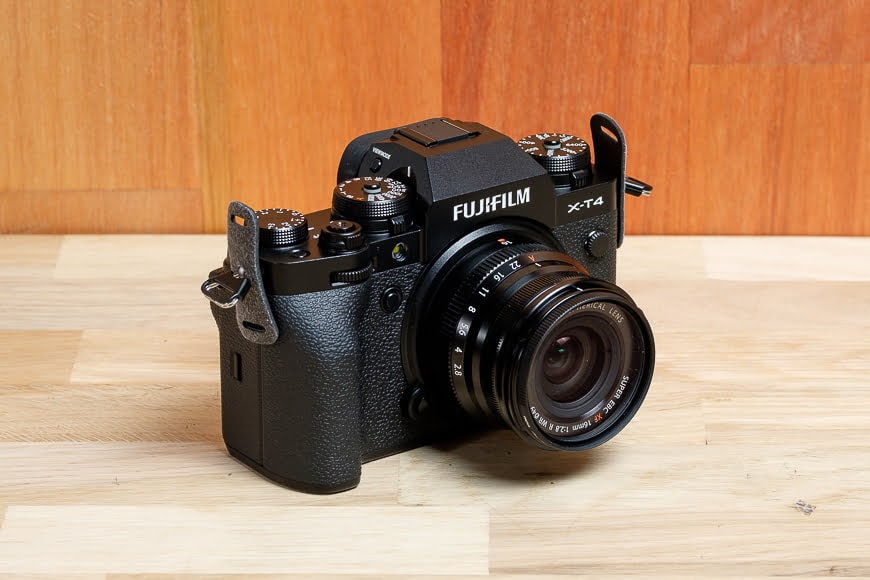
Look at this gorgeous little street set-up – the Fujifilm X-T4 and the XF 16mm f/2.8
Battery
I probably owe a lot of people money as I was betting with such certainty that Fuji wouldn’t move into new battery-sizes just yet – especially not with this camera.
The standard WP-126S is found in all of the current – and many of the past – generation Fuji bodies. I love having that one size to fit them all as I have two bodies that use this battery and being able to pack the same spare battery for either is great.
The Fujifilm X-T4 uses the new and larger NP-W235 Li-ion battery. Fuji claim it will survive far longer and allow you to capture up to 600 shots – the WP-126S will facilitate up to 400 frames.
That’s a pretty decent improvement and goes a long way to dealing with the complaint that mirrorless systems chew through batteries – see our article on mirrorless vs DSLR cameras for more on that.
As previously mentioned, it’s important to note that the Fujifilm X-T4 does not come boxed with a battery charger.
Instead, the kit includes a USB – USB-C cable that allows you to plug directly into the camera and charge the battery.
There are pros and cons with this decision – the pro is that you can charge on the go via a power bank and the con is that you cannot charge an extra battery.
Fear not for Fuji has also announced a battery charger that can charge two batteries at once. It is the BC-W235 and it features an LCD to show battery charge progress for each battery.
Video
Another important feature to cover is the capability of the Fujifilm X-T4 to crank out excellent video quality. The X-T3 was awarded and applauded for its video performance and the X-T4 is no different!
This new Fuji can record video to an external device via HDMI at 4K/60P 4:2:2 10 bit or internally at 4K/60P 4:2:0 10bit – this is class-leading performance.
Plus, with the new Still/Video dial under the Shutter Speed control, you can quickly select Movie and have access to a video-centric main menu. The touch screen also has a handy video interface for quickly changing your settings on the fly.
The X-T4 is also capable of shooting high-speed video in Full-HD at 240P – this results in video files with up to 10x slow-motion.
Image Stabilisation
The final word on video includes two stabilisation features.
The first is the DIS or Digital Image Stabilisation that operates in addition to the IBIS – In Body Image Stabilisation.
The second is the IS Boost Mode that actively works with or without the DIS to remove camera shake.
With these kinds of features, you will be producing high-quality video in no time.
Value for Money

Just a handful of amazing Fuji lenses well suited to the Fujifilm X-T4.
This is, without a doubt, the greatest flagship X-Series camera that Fujifilm has developed to date.
The Fujifilm X-T4 is an all-round solid performer that excels at everything it attempts to do – it really is a winner of a camera.
With the capability to capture fantastic still images and produce high-quality video, the asking price of around $1,700 is well worth it.
What’s more, you have access to an incredible range of quality lenses from small and compact primes to big telephoto zooms. There really is something for everyone.
If you want to use the X-T4 as a wedding camera, grab the near-perfect XF 50-140mm f/2.8.
Or, if you want to shoot street like a ninja, grab the compact but lighting fast XF 23mm f/2. You get the picture!
You can compile a great photography or video kit for a fraction of what some full-frame setups will cost.
Fujifilm X-T4 Review | Conclusion
I’ve been a huge fan of the X-T series since the beginning. It’s a camera range that continues to delight both new and seasoned photographers, and the Fujifilm X-T4 is clearly the most refined, advance and capable of them all.
Regardless of its tech prowess, it hasn’t lost the ability to deliver the joy of photography to any who holds it.
Being able to finely control your composition through a clever range of core function dials and customisable actions is both appealing and rewarding.
It’s the sort of camera that would suit and delight street shooters just as much as it would event photographers.
Beyond this, if you love videography but want a compact and capable system, the Fujifilm X-T4 is for you. Should you get really serious about videography, then there’s even a couple of remarkable Fujifilm cine lenses made for the X Series.
I take my role as an impartial reviewer seriously: if there’s something that stinks about a camera I’m going to tell you about it.
But I couldn’t find fault with the Fujifilm X-T4. At first, I thought I was wearing my rose-coloured lenses, but when I checked with other reviews I found a consistent message – this is a camera that’s pretty close to perfection.
If you’re looking to upgrade from an earlier version of the X-T series then pay close attention to the differences I listed between the X-T3 and the X-T4. There are some significant changes that really do make it an upgrade worth considering.
The Fujifilm X-T4 is quite literally the best camera in a long-running succession of great cameras from Fuji. It has inherited decades of research and implementation, not only in the digital world but in the film stock world too.

Shoot flawless photos with state-of-the-art image stabilization, superb AF and impressive burst mode.









